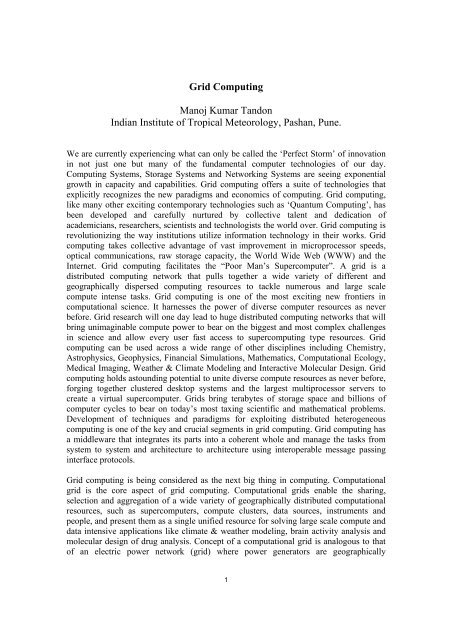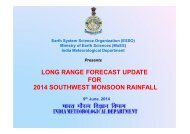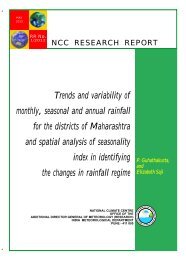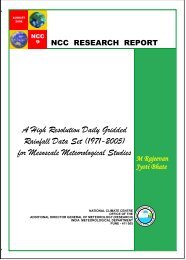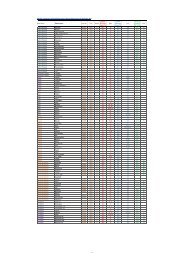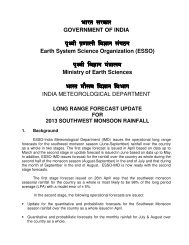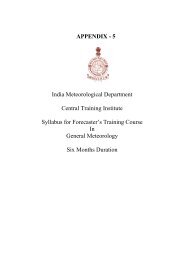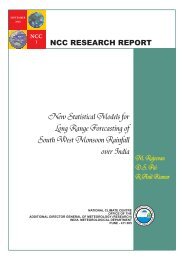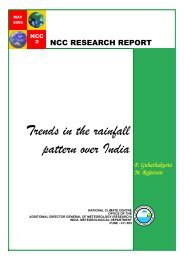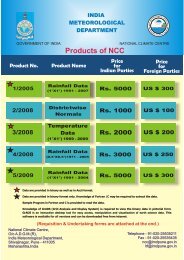BULLETIN OF IMSP - (IMD), Pune
BULLETIN OF IMSP - (IMD), Pune
BULLETIN OF IMSP - (IMD), Pune
- No tags were found...
Create successful ePaper yourself
Turn your PDF publications into a flip-book with our unique Google optimized e-Paper software.
Grid ComputingManoj Kumar TandonIndian Institute of Tropical Meteorology, Pashan, <strong>Pune</strong>.We are currently experiencing what can only be called the ‘Perfect Storm’ of innovationin not just one but many of the fundamental computer technologies of our day.Computing Systems, Storage Systems and Networking Systems are seeing exponentialgrowth in capacity and capabilities. Grid computing offers a suite of technologies thatexplicitly recognizes the new paradigms and economics of computing. Grid computing,like many other exciting contemporary technologies such as ‘Quantum Computing’, hasbeen developed and carefully nurtured by collective talent and dedication ofacademicians, researchers, scientists and technologists the world over. Grid computing isrevolutionizing the way institutions utilize information technology in their works. Gridcomputing takes collective advantage of vast improvement in microprocessor speeds,optical communications, raw storage capacity, the World Wide Web (WWW) and theInternet. Grid computing facilitates the “Poor Man’s Supercomputer”. A grid is adistributed computing network that pulls together a wide variety of different andgeographically dispersed computing resources to tackle numerous and large scalecompute intense tasks. Grid computing is one of the most exciting new frontiers incomputational science. It harnesses the power of diverse computer resources as neverbefore. Grid research will one day lead to huge distributed computing networks that willbring unimaginable compute power to bear on the biggest and most complex challengesin science and allow every user fast access to supercomputing type resources. Gridcomputing can be used across a wide range of other disciplines including Chemistry,Astrophysics, Geophysics, Financial Simulations, Mathematics, Computational Ecology,Medical Imaging, Weather & Climate Modeling and Interactive Molecular Design. Gridcomputing holds astounding potential to unite diverse compute resources as never before,forging together clustered desktop systems and the largest multiprocessor servers tocreate a virtual supercomputer. Grids bring terabytes of storage space and billions ofcomputer cycles to bear on today’s most taxing scientific and mathematical problems.Development of techniques and paradigms for exploiting distributed heterogeneouscomputing is one of the key and crucial segments in grid computing. Grid computing hasa middleware that integrates its parts into a coherent whole and manage the tasks fromsystem to system and architecture to architecture using interoperable message passinginterface protocols.Grid computing is being considered as the next big thing in computing. Computationalgrid is the core aspect of grid computing. Computational grids enable the sharing,selection and aggregation of a wide variety of geographically distributed computationalresources, such as supercomputers, compute clusters, data sources, instruments andpeople, and present them as a single unified resource for solving large scale compute anddata intensive applications like climate & weather modeling, brain activity analysis andmolecular design of drug analysis. Concept of a computational grid is analogous to thatof an electric power network (grid) where power generators are geographically1


